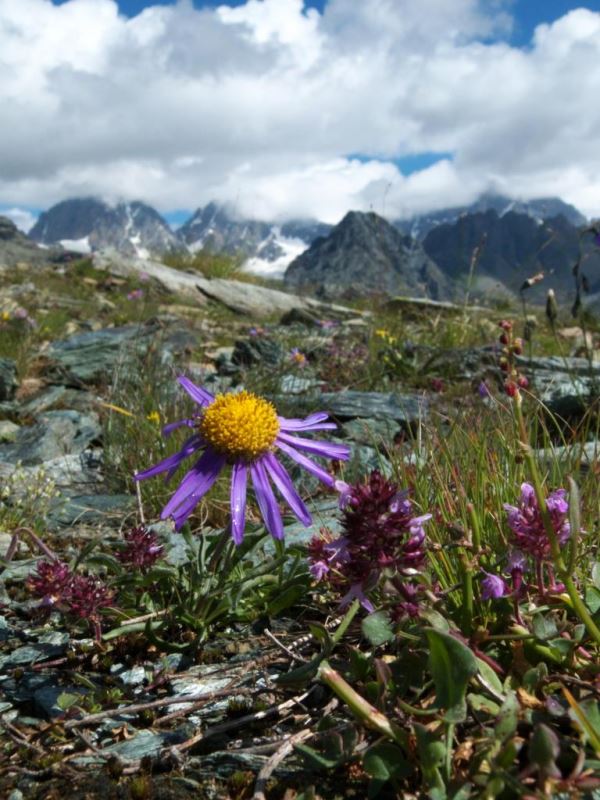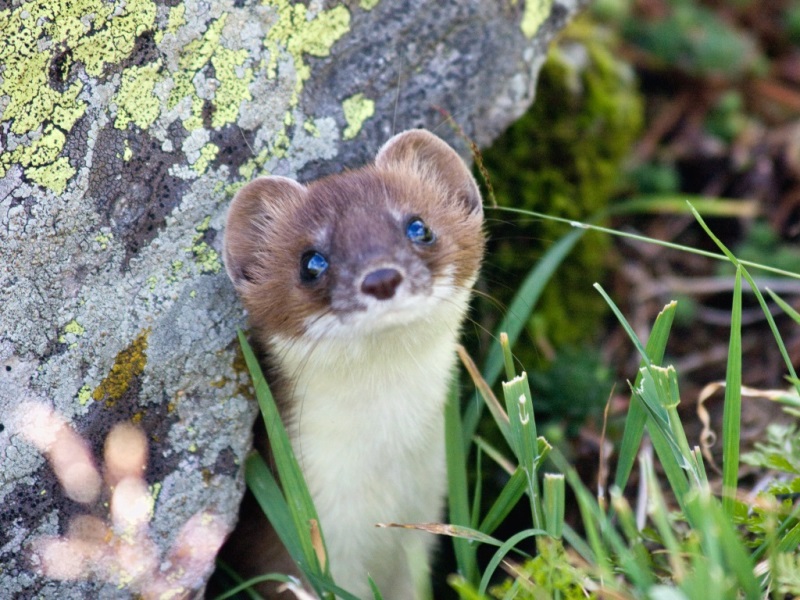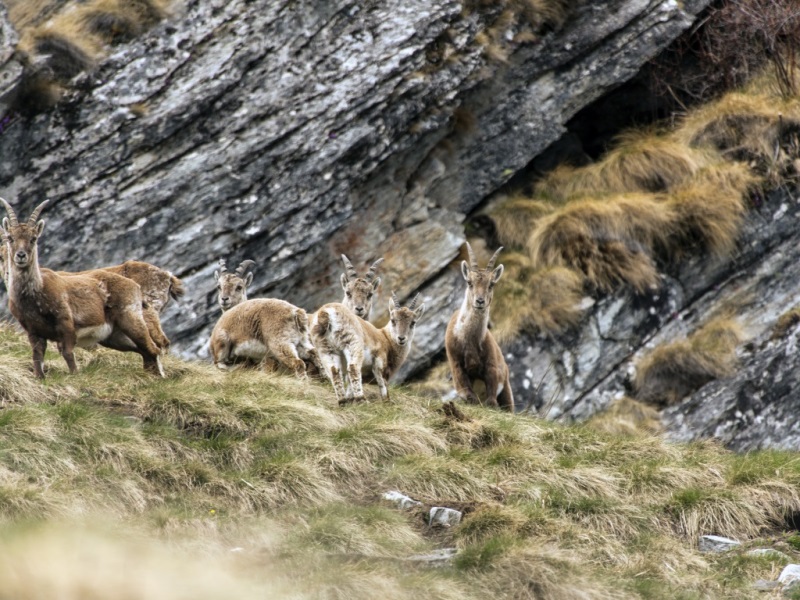 Flower high in the mountains
Flower high in the mountains
Above 2,800 m a.s.l., when the weather conditions become harsher and the soil thinner as rocks and debris surface, the vegetation barely covers the ground evenly and becomes patchy.
This is when the structure and chemistry of the substrate play an important role.
Siliceous soil can be distinguished by rock plants such as:
Primula hirsuta (primrose),
Primula latifolia (clammy primrose),
Asplenium septentrionale (forked spleenwort),
Phyteuma scheuchzeri (Oxford rampion).
Saxifraga cotyledon (pyramidal saxifrage),
at the lower levels, and
Androsace vandelli,
Phyteuma hedraianthifolium (Rhaetian rampion),
Saxifraga exarata (furrowed saxifrage),
Eritrichium nanum (fairy borage)
at the higher levels, and on the screes and moraines with
Androsace alpina,
Oxyria digyna (alpine sorrel),
Geum reptans (creeping avens),
Adenostyles tomentosa.
Valmalenco has a more fragmentary presence of calciphile vegetation, as calacareous deposits in the Dolomites are scarce.
They can be found, for example, at the Canciano Pass, where you can see
Thlaspi rotundifolia (pennycress),
Papaver rhaeticum (yellow Alpine poppy),
Campanula cochlearifolia (earleaf bellflower),
Hutchinsia alpina (chamois cress),
Achillea atrata (black yarrow).
On the other hand, we can find the following plants on debris and morain of serpentine-like rocks, especially in the Disgrazia range (Valle Ventina, Val Sissone):
Thlaspi corymbosum.
In places where snow remains almost throughout the year, we find bryophytes and dwarf willows in the little nival valleys, including
Luzula alpino-pilosa (alpine woodrush),
Doronicum clusii (leopard's banes)
and the fern
Cryptogramma crispa (parsley fern)
on the scree slopes and morains.
 Stoat
Stoat
Only a few animals, which have adapted specially, spend the winter in these harsh, very cold environments.
Amongst these are three species, which also frequent the alpine meadows.
They are the white partridge, the mountain hare and the stoat, all of which have developed specially to camouflage themselves in their environment by becoming as white as the snow in winter.
Tiny birds, such as the Alpine accentor and the Alpine finch, prefer high altitudes all year round, although they descend to the valley during stormy days with particularly low temperatures.
The Alpine choughs are not so attached to the high altitudes and, in late winter, you can see great flocks of them flying over the entrance to the valley in their hunt for food.
 Ibex
Ibex
The ibex always keeps to the steepest, south-facing, rocky walls even in winter, where the snow slides away more easily.
This leaves a little dry grass available which, together with the fat stored over the summer, allows these animals to survive until spring.
The few that do not survive become a useful source of food for other animals, such as the lammergeyer, a large bird of prey, which was reintroduced to the Alps at the end of the 80s, and is now increasingly seen soaring through the skies of the Valmalenco.